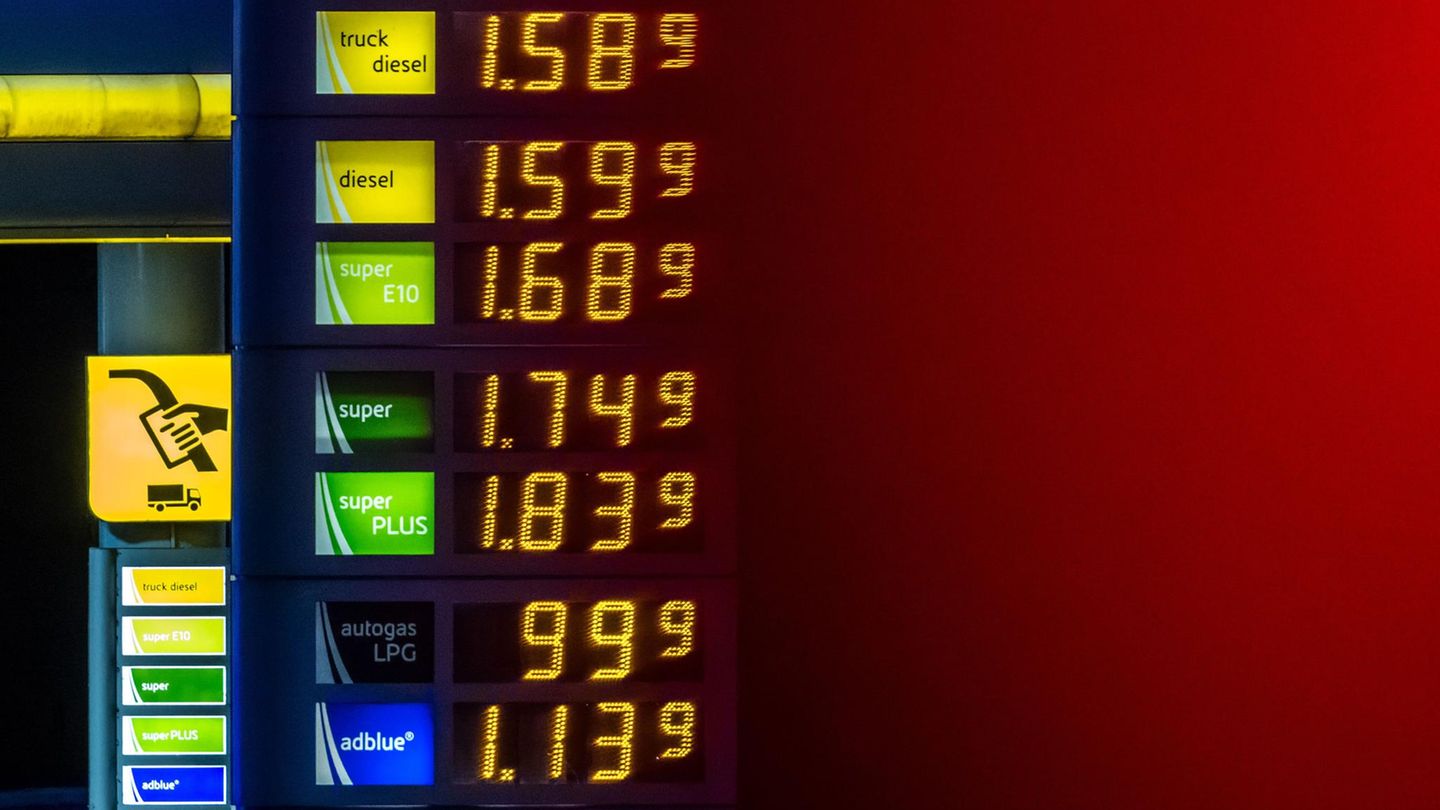Higher gasoline prices
The wall still stands when it comes to fuel prices
Copy the current link
Add to watchlist
Fresh price data from the Federal Cartel Office show that anyone who fills up in East Germany often pays more for petrol. The data also confirms an old rule of thumb.
This year, refueling in eastern Germany has often been significantly more expensive than in the west and south of the country.
The market transparency office for fuels at the Federal Cartel Office published a report according to which a liter of premium gasoline (E5, i.e. with up to five percent bioethanol) cost an average of around 1.80 euros or more in many cities and districts in eastern Germany in the first three quarters, while in many municipalities in western and southern Germany it was only around 1.70 euros or less. The price difference between the areas was up to 20 cents. Motorway gas stations were not included.
According to the information, it was comparatively expensive, especially in the north of Saxony-Anhalt – for example in the Börde district – and in Saxony, in the area around Dresden. Refueling was relatively cheap in parts of Rhineland-Palatinate, Lower Saxony and Bavaria.
The competition watchdogs did not comment on the exact reason for the high price difference. However, they emphasized that they would take a closer look at the matter – Cartel Office chief Andreas Mundt spoke of “noticeably high prices” in eastern German regions.
However, there were exceptions to the price differences: in some areas in the west and south, drivers were also asked to pay heavily, while in some places in the east it was possible to fill up quite cheaply. On average across Germany, a liter of Super cost 1.72 euros and a liter of diesel 1.59 euros in the third quarter. According to information, there are around 15,000 gas stations in the Federal Republic.
Filling up on the way to work? That will be expensive
Less surprising, but still noteworthy, are the large price differences at different times. A liter of premium gasoline in major cities at seven in the morning was on average around eight cents more expensive than the overall average for the third quarter. It was cheapest there from 5 p.m. to 9 p.m. – then it was around three cents cheaper than the overall average.
This means that anyone who fills up at 7 p.m. has saved a good eleven cents per liter compared to someone who fills up at seven in the morning on the way to work. The more rural it was, the smaller the price difference was throughout the day.
Competition watchdog Mundt advises consumers to use fuel apps to get an overview of cheap fuel options. Such fuel apps use data from the market transparency office of the Cartel Office. The approximately 15,000 gas stations in Germany are obliged to report any price changes within five minutes. “Consumers can easily identify cheap providers and reward them with their fueling decision.”
DPA
rw
Source: Stern
I’m a recent graduate of the University of Missouri with a degree in journalism. I started working as a news reporter for 24 Hours World about two years ago, and I’ve been writing articles ever since. My main focus is automotive news, but I’ve also written about politics, lifestyle, and entertainment.




